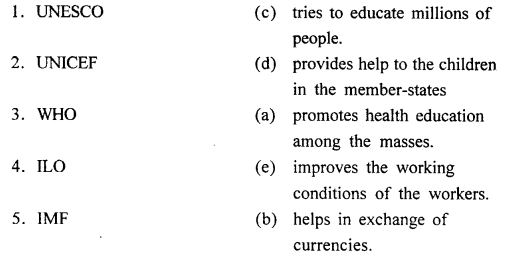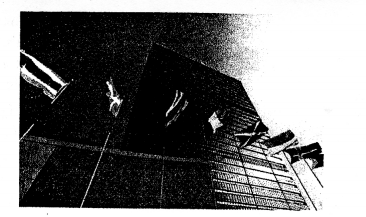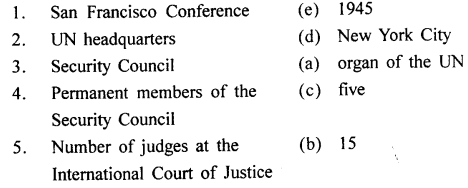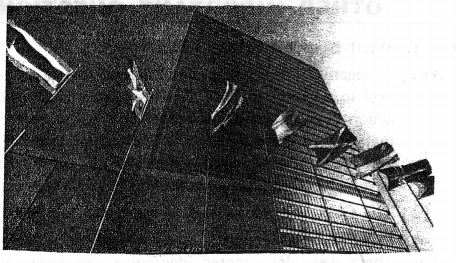ICSE Solutions for Class 7 History and Civics – Medieval Europe – Rise and Spread of Christianity
ICSE SolutionsSelina ICSE SolutionsML Aggarwal Solutions
APlusTopper.com provides step by step solutions for ICSE Solutions for Class 7 History and Civics. You can download the History and Civics ICSE Solutions for Class 7 with Free PDF download option. History and Civics for Class 7 ICSE Solutions all questions are solved and explained by expert teachers as per ICSE board guidelines.
ICSE Solutions Class 7 History & CivicsGeographyMathsPhysicsChemistryBiology
Important Words
- Medieval comes from a Latin word which means ‘time in the middle’. The Medieval Period is the period between the Ancient and the Modem periods.
- The Messiah is a liberator of an oppressed people or country/ the promised deliverer of the Jews.
- The Christ is the Messiah/the title given to Jesus.
- The Old Testament constitutes the first major part of the Bible. It is traditionially divided into the categories of law, history, poetry (or wisdom books) and prophecy.
- Baptism is the Christian rite of sprinkling water on a person’s forehead or immersing him/her in water, symbolizing purification and admission to the Christian church.
- Resurrected means to be returned to life after death.
- The Gospels are the first four books of the New Testament (the second part of the Bible) that tell the story of Christ’s life and teachings.
- The Goths, the Vandals and the Franks were European tribes which invaded the Roman and Greek empires in the Early Medieval Period.
- Crusades were the holy wars waged by the Christians against the Turks, who had captured the lands of the Christian emperor of Constantinople and Jerusalem (the holy land of the Christians).
Time To Learn
I. Fill in the blanks:
- Christianity was founded by Jesus Christ. He began preaching at the age of thirty.
- Jesus criticised all harmful activities and evils.
- Galerius Constantine recognised Christianity.
- Constantine established a new capital at Byzantine in AD 330.
- The last Roman emperor, Romulus Augustus was deposed in AD 476.
II. Match Column A with Column B:

Answer:
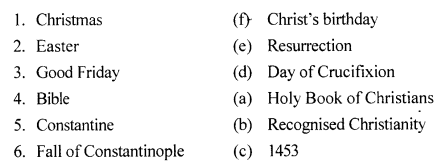
III. State whether the following statements are True or False:
- Paul spread the teachings of Christ in Greece and Rome.
True. - Emperor Charlemagne recognised Christianity in AD 313.
False.Emperor Constantine embraced Christianity in AD 313. - The head of the Roman Church, the Pope, was considered the representative of Christ on Earth.
True. - Constantinople fell in AD 1453.
True. - Crusades were fought between Hindus and Christians.
False Crusades were fought between Islam and Christians.
IV. Answer the following questions briefly:
Question 1.
Where was Christ born? Why was he crucified?
Answer:
Jesus Christ was born in Bethlehem, a small village of Jerusalem. His father Joseph and mother Mary were Jews. Jesus was bom in about 4 BC. Jesus emphasised on one God and gave immense importance to love, brotherhood and compassion. He fearlessly criticised all harmful activities and evils. This made the rich and powerful among the Romans his enemy. They complained to Pontius Pilate, the Roman Governor of Palestine, accusing Jesus of calling himself the king of Jews and thus encouraging people to rebel against Roman rulers. Jesus was arrested and crucified. The cross became a sacred symbol of the Christians.
Question 2.
Describe the teachings of Christ.
Answer:
Jesus preached his message in simple words, in the form of stories that the common man could understand.
Some of his main teachings were:
- All men are brothers as we are the children of the same God.
- God is one, so worship of various gods is of no use.
- God is so kind that he forgives even the sinner if he repents.
- God will love us if we are kind to our fellowmen.
- Hate the sin and not the sinner.
- Refrain from worldly evils like greed, avarice and vanity.
- Jesus called himself the ‘Son of God’ who had been sent by God to guide man to attain salvation.
- Kingdom of God could be built by man, purified by the love of God.
Question 3.
Discuss the contribution of emperor Constantine in spread of Christanity.
Answer:
Constantine the Roman Emperor, defeated all his rivals who came in way of spreading Christianity and declared himself as the undisputed emperor. He made Christianity a legal religion and in this way persecution of Christians came to an end. Later on Christianity become the official religion of the Roman empire.
Question 4.
Describe the emergence and fall of Constantinople.
Answer:
The Roman emperor Constantine established a new capital at Byzantine in AD 330. This city became famous as Constantinople, named after Constantine. The Byzantine empire with Constantinople as its capital prospered for a thousand years until AD 1453. It had close relations with countries of the east, including India. The Byzantines built beautiful churches with lavish decorations. Constantinople became the largest city in Europe, the most splendid and prosperous.
The Fall of Constantinople
The capital of Constantinople had been under attack many times before, and all have failed, all but one. The Ottoman Turks, who were Muslims and under the lead of Sultan Mehmed 11, had an army of 100,000 to 150,000, while the army for Constantinople had 10,000. The siege lasted for about fifty days. The army of Constantinople tried to use every tactic that worked before, but they were greatly outnumbered, which hurt their chances. As well as trying to take over the city, the Turks were fighting and trying to take over the seas and ports. On Tuesday, May 29, 1453, the army of Constantinople surrendered and left, letting the Ottomans take over the city.
Question 5.
Discuss the reasons for the decline of the Roman empire.
Answer:
The barbarian invasions penetrated deep into the Roman territory and plundered and ravaged it. Even the magnificent city of Rome was not spared. These tribes gradually settled down and assumed control of the western part of the Roman empire which lead to its decline.
V. Picture Study : Study the picture and answer the following questions.

- Identify and name the painting.
Ans. The last supper. - Name the Painter.
Ans. Leonardo da Vinci. - Describe the theme of the painting.
Ans. A painting of Jesus with his disciples.
Additional Questions
(Rise of Christianity)
A. Fill in the blanks:
- In the middle of the 1st century bce the Romans conquered Palestine, the homeland of the Jews.
- Jesus was believed to the son of God. He was born to Mary.
- For three years, Jesus travelled throughout Galilee, preaching, teaching and healing the sick.
- Jesus taught that there was one God who was compassionate, loving and forgiving.
- Towards the end of the 4th century ce. Christianity became the official religion of the Roman empire.
B. Match the following:

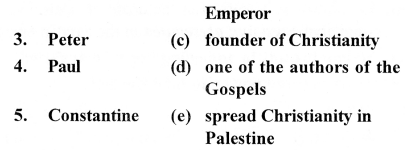
Answer:

C. Choose the correct answer:
- Jesus grew up in Bethale/iem/Jerusalem/Nazareth, where he studied Jewish scriptures.
Ans. Jesus grew up in Nazareth, where he studied Jewish scriptures. - Jesus taught that God loved and forgave/hated/ignored
Ans. Jesus taught that God loved and forgave sinners. - Jesus was sentenced to death by Maxentius/Pontius Pilate/Constantine.
Ans. Jesus was sentenced to death by Pontius Pilate. - The teachings of Jesus were spread most actively in Palestine by John/Mark/Peter.
Ans. The teachings of Jesus were spread most actively in Palestine by Peter. - For almost 300 years after the death of Jesus, Christians were treated will/given special rights/oppressed and persecuted in the Roman empire.
Ans. For almost 300 years after the death of Jesus, Christians were oppressed and persecuted in the Roman empire.
D. State whether the following are true or false:
- Jesus had the power to heal the sick.
True. - Jesus taught that we should harm only those who harm us.
False.
Correct: We should help the needy and do good even to those who harm us. - Jesus’s interpretation of Jewish law was the same as that of other Jewish religious leaders.
False.
Correct: Jesus’s interpretation of Jewish law clashed with the ideas of the Jewish religious leaders. - In the 4th century CE, Christianity became the official religion of the Roman empire.
False.
Correct: In the 2nd century CE, Christianity became the official religion of the Roman empire. - The Pope became the spiritual head of Christians all over the world.
True
E. Answer the following questions in one or two words/ sentences:
1. Explain the Latin origin of the term ‘medieval’.
Ans. Medieval comes from a Latin word which means ‘time in the
middle’. The Medieval Period is the period between the Ancient and the Modem periods.
2. Who conquered Palestine in the middle of the 1st century BCE?
Ans. In the middle of the 1 st century bce, the Romans conquered Palestine, the homeland of the Jews.
3. Where was Jesus born?
Ans. Jesus was bom around 6-4 bce, in a small village of Bethlehem in Judea. He was believed to be the son of God, was bom to Maty.
4. Who was King David?
Ans. King David was Israel’s most famous king who had liberated Israel from foreign rule 1,000 years ago.
5. How many disciples did Jesus have?
Ans. Jesus gathered around him a band of 12 disciples.
6. Mention two fundamental principles of Christianity.
Ans.
The two fundamental principles of Christianity are:
- Unconditional love for God.
- True love for one’s neighbour.
7. Why were the Jewish religious leaders angry with Jesus?
Ans. Due to Jesus intelligence, wisdom, compassion and simplicity large crowds were attracted towards him. This greatly enraged the Jewish religious leaders who felt threatened by his growing popularity.
8. Where are the life and teachings of Jesus Christ recorded?
Ans. The life and teachings of Jesus Christ were recorded in the Gospels by four of his disciples—John, Mathew, Mark and Luke.
9. Who is described as the ‘foundation rock’ of Christianity?
Ans. Peter is described as the ‘foundation rock’ of Christianity.
10. Who prepared the grounds for transforming Christianity into a world religion? –
Ans. Paul, a convert to Christianity became one of the most powerful and enthusiastic exponents of Christianity. He travelled extensively throughout the Roman empire, preparing the grounds that would transform Christianity into the world religion in the future.
11. What is the importance of St Peter’s Church in Rome?
Ans. St Peter’s Church in Rome is the religious headquarters of the Christian world.
12. Who became the spiritual head of the Christians?
Ans. The Bishop of St Peter’s Church, the Pope, became the spiritual head of Christians all over the world, and was acknowledged as the representative of Christ on earth.
F. Answer the following questions briefly:
Question 1.
Give an account of the early life on Jesus in Nazareth. What happened after his baptism?
Answer:
Jesus grew up in Nazareth, in northern Palestine, where he studied the Jewish scriptures. He realized that traditions and practices which violated the Law of Moses were being followed by certain Jewish religious groups, such as the Pharisees.
After baptism a divine revelation convinced Jesus that the time had come for him to fulfil his mission of freemen from the bondage of evil and guiding them on the path that would lead to the victory of good over evil.
Question 2.
The teachings of Jesus were simple, yet revolutionary. Explain.
Answer:
The teachings of Jesus were simple, yet revolutionary.
He established a code of conduct for men and women based on:
- Unconditional love for God
- True love for one’s neighbour
Jesus taught that there was one God who was compassionate, loving and forgiving. As children of God, we should mould ourselves in the image of God. We should love our neighbours, including the poor, the sinners and even our enemies; we should help the needy and do good even to those who harm us; we should forgive our enemies and win them over with our love. Since God loved sinners and forgave them, we should do the same. Jesus completely rejected the ‘eye for an eye and a tooth for a tooth’ principle.
Question 3.
Discuss the reasons and events leading to the crucifixion of Jesus.
Answer:
Jesus attracted large crowds wherever, he went through his intelligence, wisdom, compassion and simplicity. This greatly enraged the Jewish religions leaders who felt threatened by his growing popularity. They convinced the Roman Governor, Pontius Pilate, that Jesus was also a threat to the political authority of the Romans. Due to which Jesus was put on trial and was later on crucified.
Question 4.
The enemies of Jesus had crucified him but Jesus would live on. Explain.
Answer:
This statement is hue that enemies of Jesus had crucified him but Jesus would live in the hearts and minds of his followers throughout the world. His teachings will be followed by the people they will walk on the path shown by him.After baptism a divine revelation convinced Jesus that the time had come for him to fulfil his mission of freemen from the bondage of evil and guiding them on the path that would lead to the victory of good over evil.
Question 5.
Give a brief account of the spread of Christianity by its followers.
Answer:
The spread of Christianity in Palestine was actively done by Peter the follower of Jesus. Another follower Paul travelled extensively throughout the Roman Empire and spread Christianity which later on in future turned into a world religion ‘
Question 6.
What role did Emperor Constantine play in the establishment of Christianity in Europe?
Answer:
Constantine the Roman Emperor, defeated all his rivals who came in way of spreading Christianity and declared himself as the undisputed emperor. He made Christianity a legal religion and in this way persecution of Christians came to an end. Later on Christianity become the official religion of the Roman empire.
G Picture study:
The picture depicts the crucifixion of the founder of a religion.
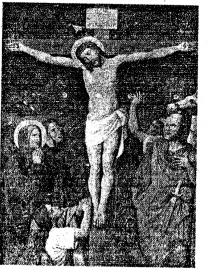
Question 1.
Name (a) the founder and (b) the religion.
Answer:
(a) the founder — Jesus Christ
(b) the religion — Christianity
Question 2.
Mention the circumstances and the reasons that led to the crucifixion.
Answer:
Jesus attracted large crowds wherever, he went through his intelligence, wisdom, compassion and simplicity. This greatly enraged the Jewish religions leaders who felt threatened by his growing popularity. They convinced the Roman Governor, Pontius Pilate, that Jesus was also a threat to the political authority of the Romans. Due to which Jesus was put on trial and was later on crucified. –
Question 3.
Mention four important principles of the religion.
Answer:
Four important principles of the religion are:
- We should love our neighbour, the poor, the sinners and even our enemies.
- We should forgive our enemies and win them over with our love.
- Unconditional love for God.
- Not to follow the principle of ‘eye for an eye and a tooth for a tooth’.
Question 4.
Name the two best-known followers of the founder. What part did they play in spreading his teachings.
Answer:
Peter and Paul are two best known disciples of Jesus. They; did a great work in spreading the teachings of Jesus in Palastine and throughout the Roman Empire. Due to them Christianity is accepted as a world religion.
Additional Questions
(Spread of Christianity)
A. Fill in the blanks:
- The great Roman empire began to disintegrate in the 5th century ce.
- One important reason for the fall of the Roman empire was the repeated attacks by the Germanic tribes.
- In 395 ce, the Roman empire was divided into two parts- eastern and western.
- By 900 ce, Christianity had become the state religion in every European state.
- The Crusades or holy wars were fought between the Christians and the Turkish Muslims, between the 11th and 13th centuries ce.
B. Match the following:


Answer:

C. Choose the correct answer
- The mighty Turkish/Roman/Greek empire began to disintegrate in the 5th century
Ans. The mighty Roman empire began to disintegrate in the 5th century ce. - The capital of the Byzantine empire wasRome/ Jerusalem/Constantinople.
Ans. The capital of the Byzantine empire was Constantinople. - The orders built great monasteries, where monks/kings/ soldiers stayed and pursued their missions.
Ans. The orders built great monasteries, where monks stayed and pursued their missions. - In the 11th century ce, the Goths/Turks/Vandals invaded the lands of the Christian emperor of Constantinople.
Ans. In the 11th century ce, the Turks invaded the lands of the Christian emperor of Constantinople. - The Crusaders learned the use of gunpowder and guns from the Greeks/Franks/Turks.
Ans. The Crusaders learned the use of gunpowder and guns from the Turks.
D. State whether the following are true or false:
- The invaders who attacked the Roman empire were semi-civilized tribes.
True. - In the confusion and disorder that followed the disintegration of the Roman empire, the only unifying factor was Christianity and the Roman Church.
True. - The spread of Christianity was one of the most important developments in the Early Medieval Period.
True. - By the end of the 5th century ce, Christian churches had been established in almost every town and city.
True. - The greatest contribution of the monasteries was in the field of education.
True.
E. Answer the following questions in one or two words/ sentences:
Question 1.
What were the ‘barbarian invasions’?
Answer:
The repeated attacks and raids by various Germanic tribes such as the Goths, the Vandals and the Franks are referred to as the ‘barbarian invasions’.
Question 2.
Name the capital of the eastern Roman empire.
Answer:
Capital of eastern Roman empire was Constantinople (modem Istanbul).
Question 3.
What effect did the barbarian invasions have on the Byzantine (eastern Roman) empire ?
Answer:
The Byzantine empire was attacked by the barbarian tribes but it proved to be more resilient than its western counterpart. It successfully withstood the onslaughts and preserved some of the great legacies of the glorious Roman empire.
Question 4.
What were the Crusades?
Answer:
Crusades were the holy wars waged by the Christians against the Turks, who had captured the lands of the Christian emperor of Constantinople and Jerusalem (the holy land of the Christians).
Question 5.
How did the Crusades pave the way for the Renaissance?
Answer:
In the course of their travels to the holy land, the crusaders came in contact with the superior civilizations and cultures of the Greeks and Muslims. They assimilated the best elements of these cultures and started the process of revival of western education and learning and paved the way for the Renaissance.
Question 6.
How did the Crusades lead to the decline of feudalism?
Answer:
The Crusaders learnt the use of gunpowder and guns from the Muslims. These two discoveries contributed to the decline of feudalism. The armoured knights had outlived their usefulness and their services were no longer required.
Question 7.
Where did the Christian monks live?
Answer:
They lived in monasteries and did not marry.
Question 8.
Name two arts that flourished in monasteries.
Answer:
Architecture, mural painting, wood carving and stained glass painting developed and flourished in the monasteries.
Question 9.
Name one internationally renowned university that evolved from a Christian monastery.
Answer:
The University that evolved from a Christian monastery of Oxford in England is know as Oxford University in the Englishspeaking world.
F. Answer the following questions briefly:
Question 1.
Briefly discuss the causes of the decline of the mighty Roman empire?
Answer:
The barbarian invasions penetrated deep into the Roman territory and plundered and ravaged it. Even the magnificent city of Rome was not spared. These tribes gradually settled down and assumed control of the western part of the Roman empire which lead to its decline.
Question 2.
The Crusades brought about significant changes in medieval Europe. In this context, discuss the following:
(a) Advent of the Renaissance
(b) Economic prosperity.
Answer:
(a) Advent of the Renaissance: In the course of their travels to the holy land, the Crusaders came in contact with the superior civilizations and cultures of the Greeks and the Turks. They assimilated the best elements of these cultures and started the process of the revival of Western education and learning, paving the way for the Renaissance.
(b) Economic prosperity: The Crusaders got a taste of the luxurious lifestyle of the East. To meet the demand for luxury items, European traders began to establish trade links with the East. As trade increased, the economy of Europe flourished.
Question 3.
Write short notes on the following:
(a) Monks and nuns
(b) Life in a monasteries
Answer:
(a) Monks: They were priests who devoted their lives to the services of God and humanity. They lived in monasteries and did not marry.
Nuns: They were the women who devoted their lives to the service of God and humanity. They lived in nunneries and did not marry.
(b) Monasteries: These were the places where the monks lived. They were located iru isolated places, far away from human habitation. Life in these monasteries was simple and orderly.
Question 4.
Describe a monastery. What did the monks and nuns do for the welfare of the people?
Answer:
A monastery was usually a large, strong and simple building, surrounded by gardens, fruit orchards, fields and ponds. Insidethe abbey was a small church, living quarters for the monks and nuns, a kitchen and storerooms. Attached to most monsteries were hospitals, schools and libraries. Monasteries played a very important role in medieval Europe. The nuns educated children and treated the sick and wounded. The greatest contribution of the monasteries was in the field of education. Some of these monasteries later developed into famous secular universities, such as the universities of Oxford and Cambridge. Besides the religious texts, secular subjects such as history, philosophy, medicine, law and astrology were also taught in these universities. The printing press and paper had not yet been invented, so the monks wrote books by hand on parchment. Most of the books were copies of the Bible and prayer books, and copies of Latin and Greek books on secular subjects. These books were a very useful source of knowledge of the ancient and medieval civilization in Europe.
Question 5.
What was the contribution of the monasteries in the field of education?
Answer:
The greatest contribution of the monasteries was in the field of education. Some of these monasteries later developed into famous secular universities, such as the universities of Oxford and Cambridge. Beside the religious texts, secular subjects such as history, philosophy, medicine, law and astrology were also taught in these universities.
G.Picture study:
This is a picture of a renowned English university built by the Christian Church .
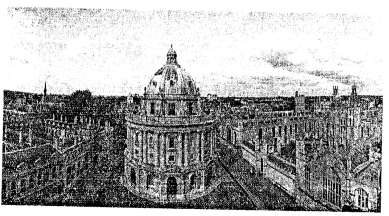
Question 1.
Identify the university.
Answer:
Oxford University.
Question 2.
What part did the Church play in the field of education?
Answer:
The Christian Church played an important role in the field of education. These Churches become great centres of scholarship, art, literature and religious studies. Educational institutions like the internationally renowned Cambridge and Oxford Universities were built by the Church.
Question 3.
Mention any two reasons for the rapid spread of Christianity in Europe between 400 ce and 900
Answer:
The conversion of a king or feudal lord was usually followed by mass conversion of his subjects. As Christianity spread, the power and wealth of the Church multiplied.Christian monks, fired by religious fervour, organized themselves into religious orders
Question 4.
In what way did the increase in wealth and power influence the policies of the Church?
Answer:
As the wealth and power of the Church increased, it became increasingly conservative and authoritarian, demanding from every Christian unqualified obedience, loyalty and total submission to its dictates.
Question 5.
What does the term ‘Crusades’ mean? How did the Crusades contribute to the revival of learning and pave the way for the Renaissance in Europe?
Answer:
Crusades were the holy wars of the Christians against the Turkish Muslims. In the course of their travels to the holy land, the Crusaders came in contact with the superior civilizations and cultures of the Greeks (Byzantium) and Muslims. They assimilated the best elements of these cultures and started the process of the revival of Western education and learning and paved the way for the


